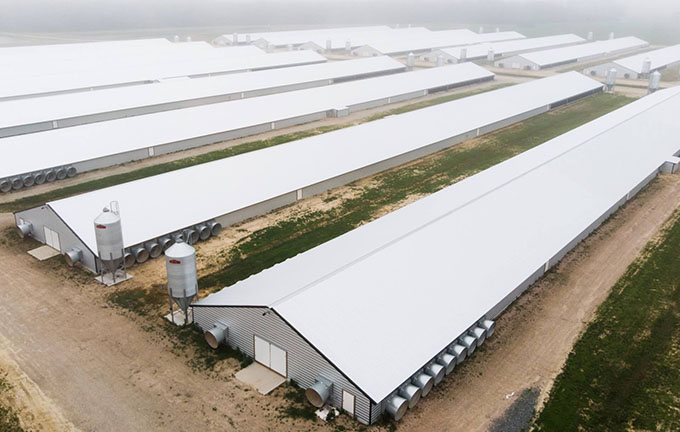By Carol Vaughn —
A study showed no significant difference in water quality between freshwater waterways where there are poultry operations and waterways with no poultry operations in Accomack County.
Richard Snyder of the Virginia Institute of Marine Science presented the findings to the Accomack County Board of Supervisors Wednesday.
The study was initiated several years ago when concerns were raised about potential effects on water quality of an expansion of poultry growing operations in the county.
The mass balance study looked at dissolved and total nutrients, including ammonia, nitrate, and phosphate in waterways, and at poultry litter.
“Poultry litter in general has about 3% nitrogen in it and 1.5% phosphorus, and although there is half as much phosphorus as nitrogen in poultry litter, it is the phosphorus that’s really the problem for the land application of the litter, because the plants need more nitrogen than they need phosphorus; the phosphorus is in excess,” Snyder said.
Ammonia is produced when poultry litter becomes damp. Snyder said most modern operations “are putting serious controls on the water that’s in the system and limiting the amount of ammonia that’s being converted into gaseous forms.”
For the study, 86 streams were sampled on the bayside and the seaside.
Samples were taken following a drought and after two rainfall events. The samples were processed by VIMS’ analytical service facility in Gloucester.
Locations of active poultry operations were obtained from Department of Environmental Quality inspection records.
Poultry farmers with modern facilities “are really doing a pretty good job of controlling runoff from these operations and that’s showing up in the data,” Snyder said.
The data is available upon request and was made available to the Natural Resources Conservation Service and the Eastern Shore Soil and Water Conservation District, Snyder said.
Snyder also presented findings from a study of groundwater near the closed southern landfill in Bobtown.
Samples taken in 2018 from the stream crossing Bobtown Road near the intersection of Hollies Church Road, near the landfill, showed very high levels of nitrogen.
The board of supervisors requested more water sampling in the area to monitor nitrogen levels.
The report Snyder presented Wednesday gave a summary of three years of sampling, which included samples from sites near the landfill and downstream to a place where the stream reaches tidal waters of a branch of Pungoteague Creek. Additional samples were taken of ponds at the landfill.
The majority of nitrogen in the system, 86%, is ammonia, which “is coming from decomposition activities within the landfill,” according to Snyder.
The study showed nitrogen and phosphorous levels in the water decreased with distance downstream from the landfill and the situation “does not appear to represent undue harm” to Pungoteague Creek.
“We’re seeing the material either dilute out or being absorbed by the time it gets down to tidal water — and that trend is true whether it’s winter or summer over two years, and I don’t suspect that will change. If anything, it should reduce as the landfill ages and decomposition processes continue in that system,” Snyder said.



